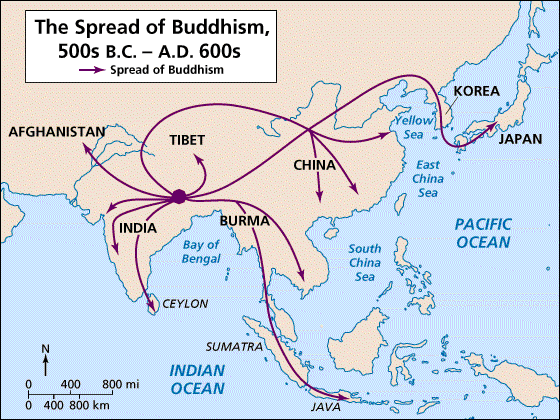The Rise and Fall of Buddhism in India
India, the birthplace of Buddhism, witnessed a remarkable transformation over the course of centuries, leading to the gradual decline and near disappearance of this influential faith. This evolution was shaped by a complex interplay of historical, sociopolitical, and cultural factors, ultimately reshaping the religious landscape of the region.
The journey of Buddhism in India began with a profound shift in royal patronage. Initially, Buddhism thrived under the auspices of the Mauryan Empire, particularly during Emperor Ashoka's reign. Ashoka's fervent promotion of Buddhism within India and beyond propelled its expansion. However, as the Mauryan Empire crumbled, a void emerged, and subsequent empires like the Sunga and the Gupta chose to extend their support to Brahmanism, the precursor to Hinduism. This shift in imperial patronage dealt a significant blow to Buddhism's growth.
The resurgence of Brahmanism during this period was fueled by the influential Hindu philosopher Adi Shankara. Through his skillful interpretations of the Upanishads and his triumphant debates against Buddhist scholars, Shankara revitalized the intellectual foundations of Hinduism, which had somewhat been overshadowed by Buddhism. His Advaita Vedanta philosophy provided a comprehensive spiritual framework that resonated with many, leading to a gradual realignment of religious sentiments in favor of Hinduism.
The social implications of this revival were profound. The reestablishment of the caste system, a key aspect of Brahmanism, stood in stark contrast to Buddhism's egalitarian principles. Over time, as the caste system became deeply ingrained in Indian society, the masses naturally gravitated back towards Hinduism, which reinforced social hierarchies.
Foreign invasions further expedited the reversion to Hinduism. The destructive attacks on renowned Buddhist educational centers, such as Nalanda, Vikramashila, and Takshashila, by foreign powers like the Huns, dealt a severe blow to Buddhism. These centers, known for their scholarly excellence and promotion of Buddhist doctrines, were reduced to ruins. The loss of these institutions created an intellectual vacuum, impeding the propagation of Buddhist teachings.
Interestingly, the syncretic nature of Buddhism, which had facilitated its rapid spread in other regions, ironically contributed to its decline in India. As Buddhism encountered diverse local traditions and customs, it often assimilated and adapted to them, resulting in the emergence of various sects and forms of Buddhism. In the Indian context, this assimilation led to the integration of Buddhism into the broader sphere of Hinduism, with Buddha being revered as an incarnation of the Hindu deity Vishnu.
While Buddhism largely faded from the Indian landscape, its philosophical legacy continues to endure. The teachings of Buddha are held in deep reverence, and sacred sites associated with his life, such as Bodh Gaya and Sarnath, remain significant spiritual landmarks, evoking a sense of reverence and reflection.
In essence, the decline and transformation of Buddhism in India is a testament to the ever-evolving nature of religious traditions. The interplay of historical forces, social dynamics, and cultural assimilation shaped the religious fabric of the region, leaving a lasting impact that continues to resonate with the rich tapestry of India's spiritual heritage.




Comments
Post a Comment